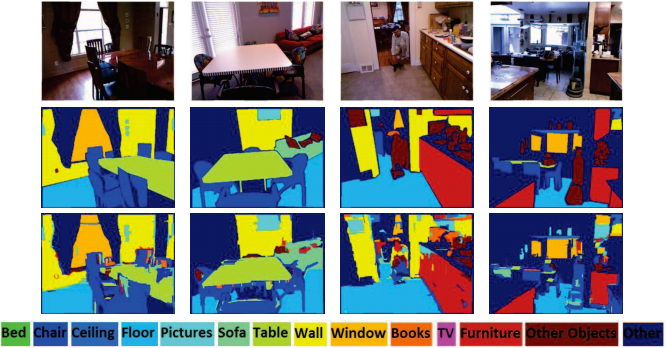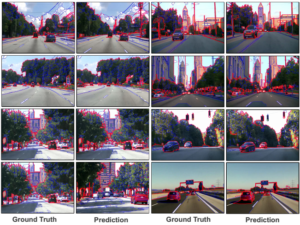Paper in WACV (2015): “Semantic Instance Labeling Leveraging Hierarchical Segmentation"
Paper
[bibtex file=IrfanEssaWS.bib key= 2015-Hickson-SILLHS]
Abstract

Most of the approaches for indoor RGBD semantic labeling focus on using pixels or superpixels to train a classifier. In this paper, we implement a higher level segmentation using a hierarchy of superpixels to obtain a better segmentation for training our classifier. By focusing on meaningful segments that conform more directly to objects, regardless of size, we train a random forest of decision trees as a classifier using simple features such as the 3D size, LAB color histogram, width, height, and shape as specified by a histogram of surface normals. We test our method on the NYU V2 depth dataset, a challenging dataset of cluttered indoor environments. Our experiments using the NYU V2 depth dataset show that our method achieves state of the art results on both a general semantic labeling introduced by the dataset (floor, structure, furniture, and objects) and a more object specific semantic labeling. We show that training a classifier on a segmentation from a hierarchy of super pixels yields better results than training directly on super pixels, patches, or pixels as in previous work.

